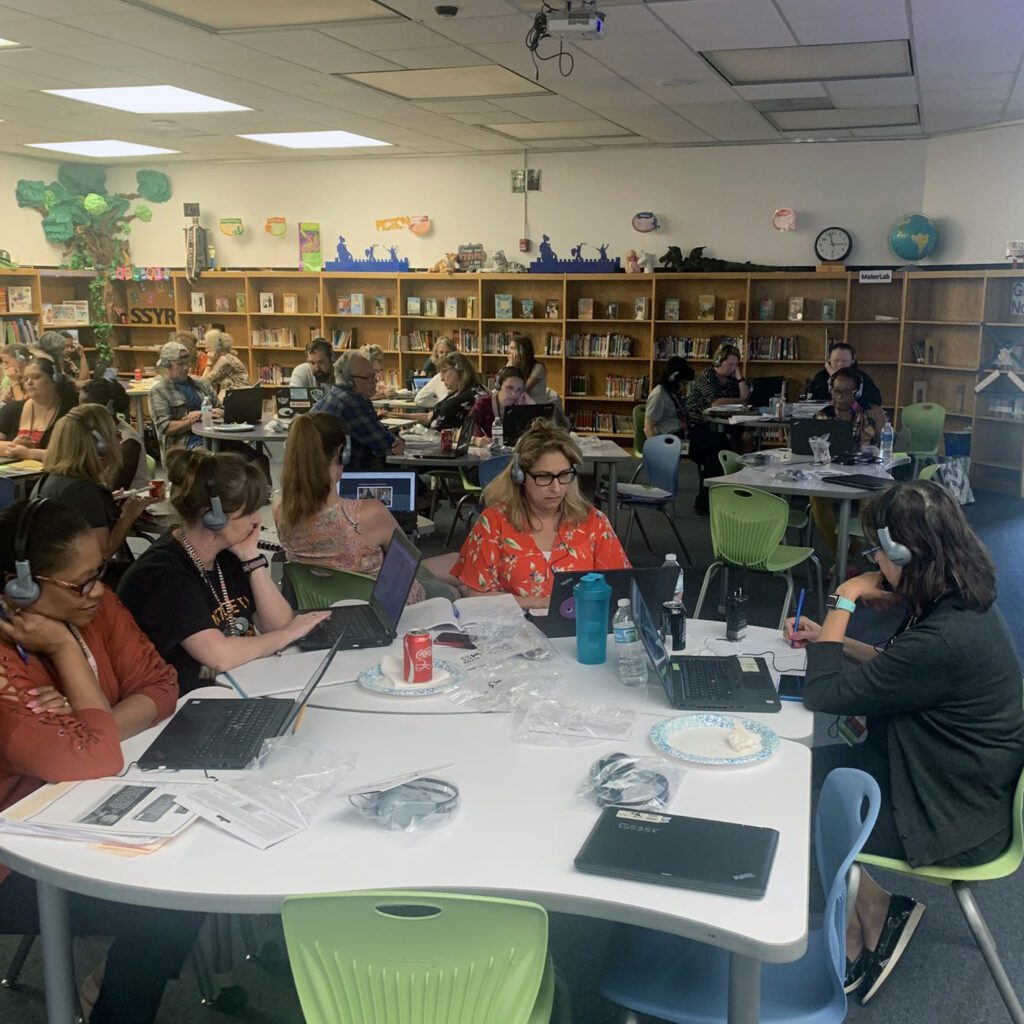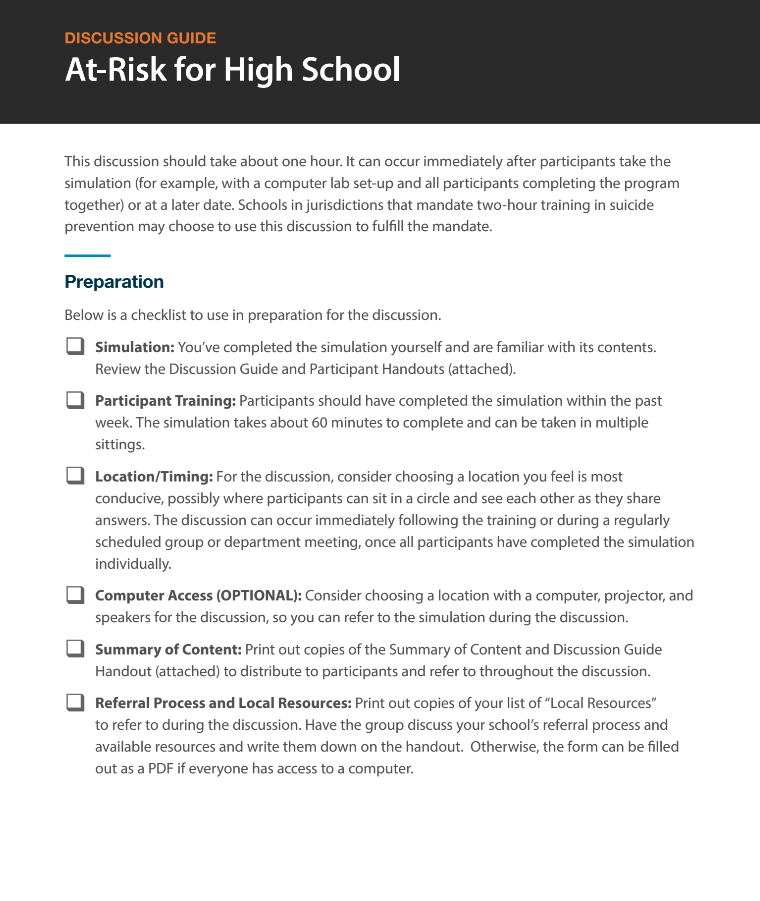4 Reasons to Try Blended Professional Development
What is blended professional development?
One definition of blended learning is: “any formal education program in which a student learns at least in part through online learning, with some element of student control over time, place, path, and/or pace.” Sometimes blended learning is also referred to as hybrid learning. While there are many models and pathways for implementing blended learning, we prefer to think about it simply as the integration of online instruction with face-to-face teaching. The concept is relatively new but has grown with the ubiquity of online technology and access to learning opportunities online.
Most of us may be familiar with blended learning in the context of student learning. For some, like in rural districts or more affluent districts, blended learning may have been in place for longer to give students access to a wider range of coursework. For others, the concept may be newer with the onset of COVID-19. Now districts are mandating or allowing students to opt into blended learning where some days are spent in person at school alternating with online instruction at home.
What is the blended professional development experience like for a teacher?
At Kognito, we offer blended learning options for districts that are implementing our simulation trainings for professional development. Let’s walk through a scenario with our At-Risk mental health simulation for teachers and staff as an example of a blended professional development experience.

The Online Experience
First, an administrator or trainer might send out an email to school staff which includes a link to the simulation where everyone can access it online. They might ask teachers to complete At-Risk at a certain time or by a certain deadline in advance of a group meeting.

If the PD is designed to be asynchronous, the teacher would log onto the Kognito portal and access the At-Risk simulation. It takes about an hour to complete, sometimes longer depending on the learner’s pace. The teacher could even close the window, pause to eat lunch, and come back where they left off in the training.
If the PD is designed to be synchronous, the trainer might designate a specific time for teachers to complete the simulation online from home or their classroom desk. Or, they may take advantage of a computer lab or ask everyone to bring a laptop to complete the simulation together in the same room (headphones recommended!).
The Face-to-Face Experience

A school administrator or trainer would designate a meeting place for a face-to-face debrief following completion of the online At-Risk simulation. This gathering could take place in person, but we’ll go with an online face-to-face example here which is more common with remote learning in place.
Using Zoom, Google Hangouts, or another video conferencing tool, teachers would come together in a group to discuss their experience with the simulation. For this piece of the professional development, admins are provided with a facilitator guide that includes reinforcement activities and discussion questions.
Since At-Risk is a training on identifying, approaching, and referring students in distress, the face-to-face component is the perfect opportunity to get more specific about school resources. The facilitator could go over the school’s specific policies for prevention and early intervention, and could even introduce the group to the specific staff to whom they would make a referral – the school’s counselors, nurses, and/or social workers.
Teachers and staff could also discuss their experience with the simulation – what they learned, what surprised them, what feedback they got from their virtual coach, etc. This face-to-face component gives schools and districts the flexibility to use this time to customize the take-home points they want their staff to walk away with and apply going forward.
With the prevalence of blended learning due to COVID-19, many districts have opted for online face-to-face learning.
Why choose blended PD over traditional, sit-and-get PD?
Just as blended learning for students is a popular means of adapting curriculum for students, blended professional development shares many parallels. Here are four highlights:
1. It is mindful of teachers’ precious time
Besides the fact that sitting through eight hours of training straight is tedious, on average educators and school staff spend 39 to 74 hours, (that’s 5 to 10 days) on mandated professional development each school year. That is time they could be with students or lesson planning, and it’s often difficult to justify adding on hours to an already heavy PD load. The flexibility that blended learning affords around splitting up time and completing the online portion at one’s own pace contributes to efficiency and autonomy for teachers’ schedules.
2. It sustains learning
Online learning comes in many forms. On the one hand, teachers might need to watch a video or click through a Powerpoint presentation. It’s easy to get distracted or bored with this passive content. On the other hand, experiencing a Kognito simulation is interactive and involves problem-solving through conversations with virtual students. But in any format, coming together with a group face-to-face adds another level of learning to the experience. It allows the group to revisit what they learned online and be challenged further through reflection and discussion.
3. It reinforces school-specific resources
For topics like mental health, training is not one-size-fits-all. The face-to-face component is able to take lessons from online learning and apply them to a school’s specific situations. As mentioned in the example of rolling out At-Risk for schoolwide mental health prevention training, this would include knowing who to refer students to in the school, protocol on how to communicate with teachers and parents, local resources, and more.
4. It fosters community
Online learning is more often than not completed individually. Everyone brings their own previous knowledge and experience to the table in an online training. With Kognito simulations, for example, simulations adapt based on learner knowledge and choices. That experience is designed to tailored to the individual. But coming together as a group is just as important. Whether school staff come together in departments, professional learning communities, or other groups, it may be introducing individuals for the first time. Sharing experiences helps everyone realize diverse perspectives and learn from each other.
If you are interested in blended professional development around school climate topics such as mental health, suicide prevention, bullying prevention, trauma-informed practices, and more, our Client Success Team works with each client to figure out the best learning method that fits your district. Try a Kognito demo here.
Explore more articles from the Kognito blog:
- Teacher Burnout & COVID-19: Supporting School Staff
- Infographic: Evaluating Professional Development for K-12 Teachers and Staff
- The Hidden Cost of Free: What Districts Should Know About the Cost of Teacher Training
- The Secret to Empowering Your Teachers and Staff With Professional Development
- 3 Ways to Upgrade to Engaging Professional Development for Teachers
